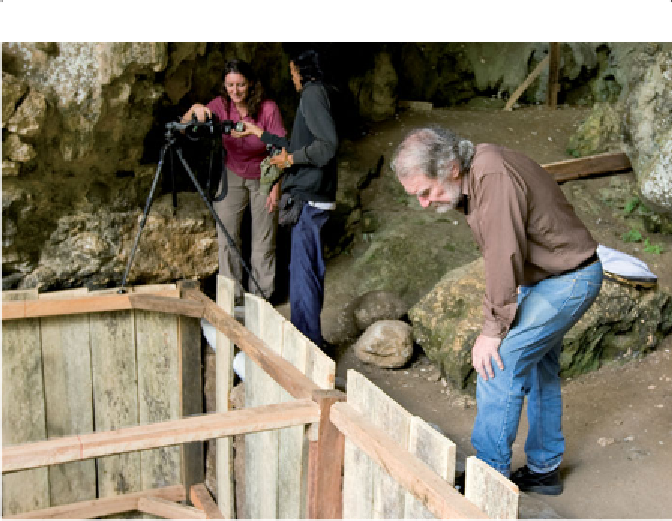Travel Reference
In-Depth Information
Figure 139
Mike Morwood looks into the shaft where the complete Hobbit skeleton was
found. Excavations in the cave and at the Soa Basin, along with new excavations on the island
of Sulawesi, are likely to cast more light on the origin of the Hobbits and the complicated his-
tory of the hominans in the Sunda Islands.
low metabolic rates mean that they can go far longer between meals. And
so another type of natural selection took over in the dragons, the process
of sexual selection. Larger and fi ercer males were selected for because they
were more successful at fi nding and keeping mates. Females too became
larger, because the genes for increased size tend to operate in both males and
females. Eventually the dragons became big enough to stalk tourists.
The discovery of the Hobbit skeleton was unprecedented. Not only was
this tiny female wildly dif erent from any other hominan found outside
Africa, but she also had no clear antecedents in the fossil record. Many scien-
tists felt uncomfortable with this huge and unexplained gap in the hominan
story.
It only made things worse when, almost instantaneously after the report
on the fossils appeared, they were given the name that fl ashed around the
world. The three
Lord of the Rings
movies had just appeared, and it would have


